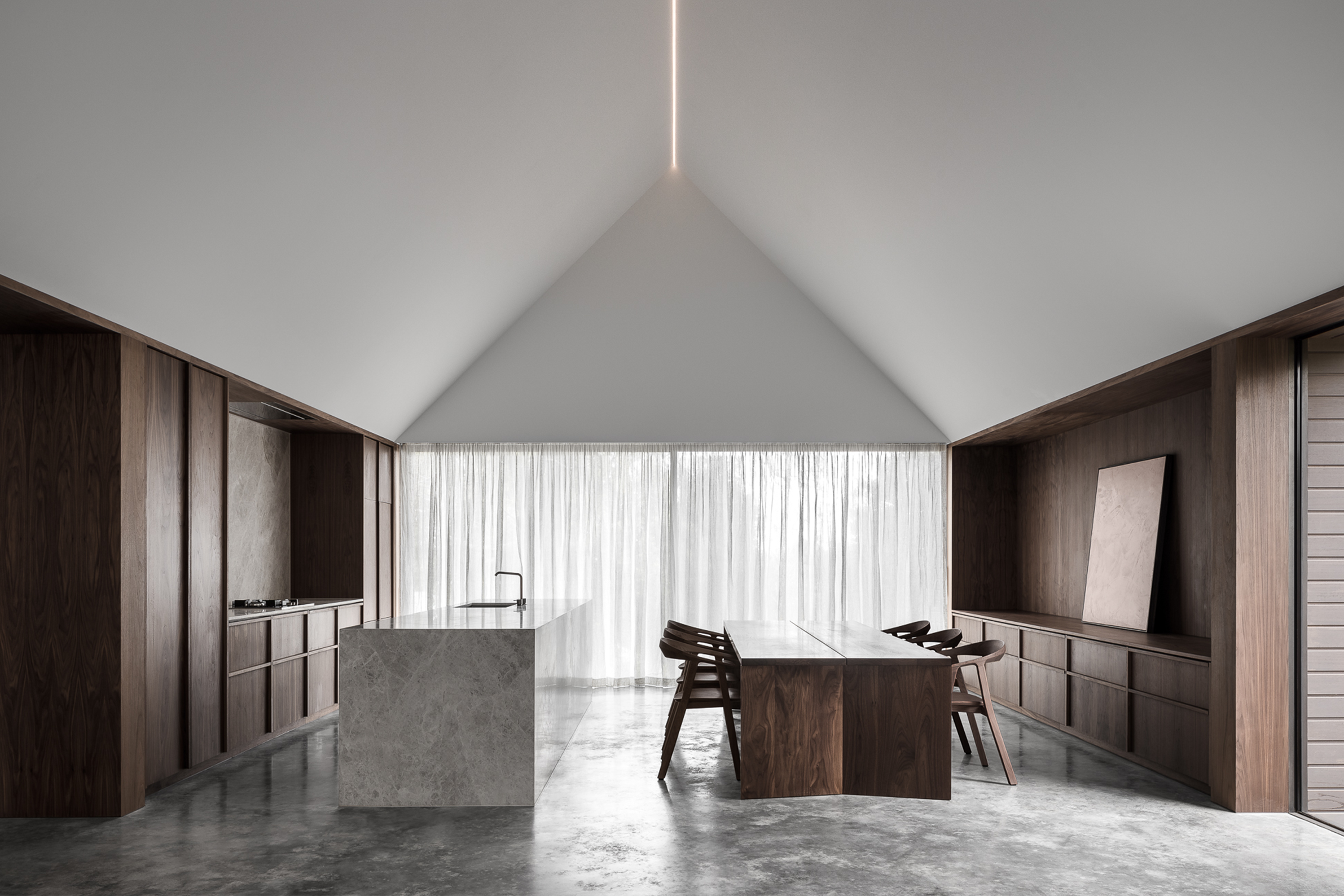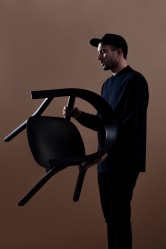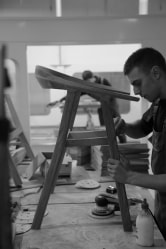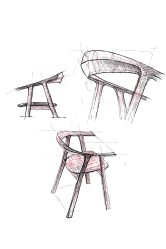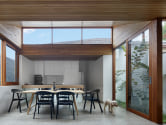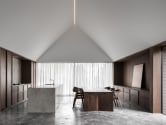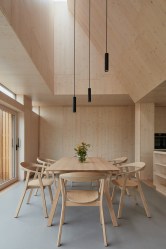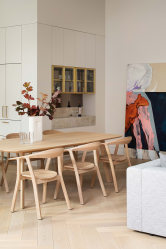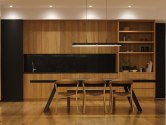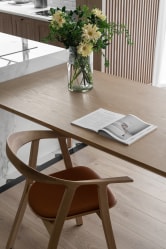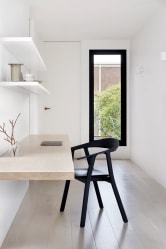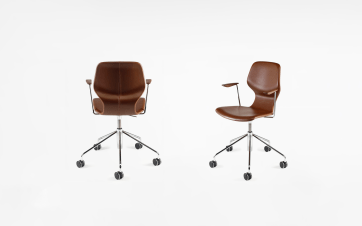Since its release, the Rhomb chair has quietly established itself as a modern design classic - appearing in architectural projects around the world, from boutique hotels and libraries to refined homes and workplaces. In this conversation, the designer Simon Morasi Piperčić reflects on the origins of Rhomb, the collaborative process with Prostoria’s R&D team, and the design principles that have helped this sculptural wooden chair stand the test of time.
How would you describe the spirit of the Rhomb chair in a few words?
Simon: Quiet presence, high comfort, clear character.
When you first developed the Rhomb chair for Prostoria, what did this project mean for the company at that time, and how did your collaboration with Prostoria’s R&D team shape the final design?
Simon: When Prostoria approached me with a brief for a chair suited to high-end restaurants and refined residential spaces, they were looking for something that combined comfort with a strong sculptural identity. At the time, they had just invested in an 8-axis CNC machine for wood processing, which opened up entirely new design possibilities. Both the in-house engineers and I were learning the full potential of this technology as we developed the chair, which made the process especially dynamic. Rhomb became something of a manifesto for Prostoria’s technical capability and craftsmanship - delivering a high level of comfort from a solid wood structure is no small feat. The collaboration with their R&D team was intensive and genuinely enthusiastic; without that level of exchange, the complexity of the design would have been impossible to achieve.
Looking back, how does it feel to see the Rhomb chair become a timeless favorite among architects and designers?
Simon: I feel proud, of course - especially when I hear from architects and agents who describe Rhomb as one of the most comfortable wooden chairs on the market. It’s rewarding to see it featured in well-considered architectural projects, where its presence feels both natural and intentional.
What do you think makes the Rhomb chair stand the test of time in so many different interiors?
Simon: I think it’s the combination of lasting comfort, a sense of solidity, and a clear but unobtrusive character. You can sit in it for hours and it feels both supportive and familiar. Its sculptural form catches light in a subtle way, which allows it to fit effortlessly into many types of interiors while still standing out.
In your view, what is the secret behind Rhomb’s ongoing appeal and versatility?
Simon: It has a clear shape but doesn’t try to dominate a space. It’s comfortable, robust, and easy to integrate into a wide variety of settings. Its versatility is further enhanced by a broad range of finishes - from natural or lacquered wood to bold colours - and two seat cushion options, available in an extensive selection of fabrics.
How has the way people use and appreciate the Rhomb chair changed or stayed the same over the years?
Simon: People still respond to the same core qualities: comfort, durability, and a distinct form. That hasn’t changed. But over time, I’ve noticed the chair being used in a broader range of contexts than we originally anticipated, including boutique hotels, libraries, and private homes. That kind of adaptability shows that the design is open to interpretation and different modes of use.
What details or qualities of Rhomb do you think architects value most?
Simon: I think they appreciate the clarity of how it’s constructed and how its form reflects its function. It has a strong, recognisable geometry - familiar, yet distinct. That combination of comfort, identity, and balance makes it easy to use across a wide variety of interiors.
Is there a particular project or setting where seeing Rhomb gave you a sense of pride or surprise?
Simon: I was especially pleased to see it featured in projects like Casa di Campo by Neil Architecture, The Courtyard House by Page Stewart, The Walnut House by Adam Kane, and even in the Starbucks HQ in London.
What has Rhomb taught you about designing for longevity and relevance?
Simon: Rhomb taught me that design objects endure when they’re well made, comfortable, and easy to understand. Designing something quiet but confident can often give it the longest life.

